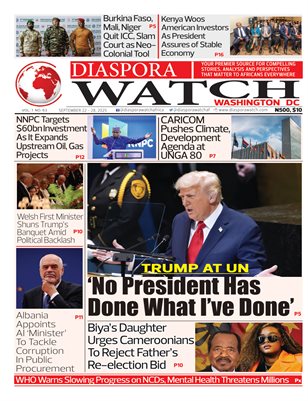Business
U.S. Yields to Pressure, Drops Mali from Visa Bond List
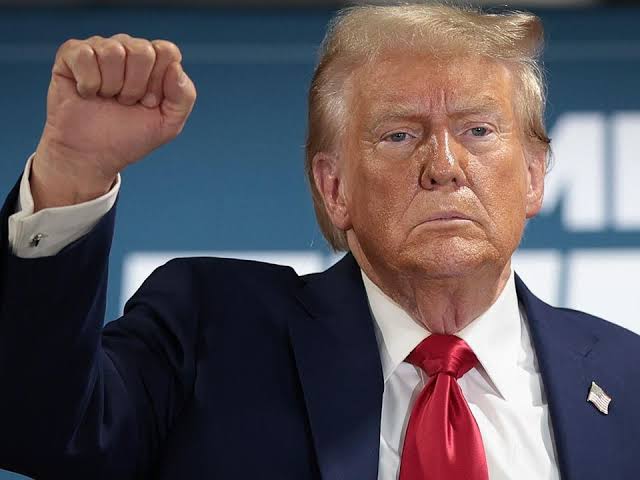
U.S. Yields to Pressure, Drops Mali from Visa Bond List
The United States has quietly withdrawn Mali from its controversial Visa Bond Pilot Programme, ending weeks of diplomatic tension with the West African nation just days before the policy was due to take effect.
In an update released on October 23, 2025, the U.S. Department of State confirmed that only six African countries — Mauritania, São Tomé and Príncipe, Tanzania, The Gambia, Malawi, and Zambia, remain subject to the visa-bond requirement, with implementation dates ranging from August to October 2025.
Mali, which was initially included in the October 8 listing, was noticeably omitted from the revised roster, a move interpreted by observers as a diplomatic backtrack following Bamako’s strong response.
According to the State Department, the initiative is backed by Section 221(g)(3) of the U.S. Immigration and Nationality Act (INA) and the Temporary Final Rule governing the pilot scheme.
It said the decision was informed by data from the Department of Homeland Security on B-1/B-2 visa overstay rates among nationals of selected countries.
The visa-bond policy, which empowers U.S. consular officers to demand a refundable bond of up to $15,000 from certain visa applicants to guarantee their return, had sparked immediate outrage in Bamako.
Malian authorities denounced the measure as unfair and discriminatory, arguing that it singled out their citizens without justifiable cause.
In a rare show of diplomatic defiance, the Malian government responded by introducing a reciprocal visa-bond rule targeting U.S. travellers.
That tit-for-tat decision appeared to have forced Washington’s hand. With the potential for a full-blown diplomatic rift looming, the U.S. eventually removed Mali from the list, easing tensions between the two countries.
Analysts say the U.S. retreat underscores Washington’s desire to avoid deepening hostilities with Mali, which in recent years has redefined its foreign alliances and taken a more assertive stance in global diplomacy.
Bamako’s firm response, they argue, signalled its readiness to confront what it perceives as unilateral or prejudicial policy moves.
By stepping back, the U.S. has effectively prevented a visa-related dispute from escalating into a broader diplomatic impasse, even as other African countries remain under the visa-bond scheme.
Business
Gold Rush Chaos Rocks Northwestern Zambia

Gold Rush Chaos Rocks Northwestern Zambia
A sudden gold rush in northwestern Zambia has degenerated into violence as thousands of fortune seekers stormed the region following viral social media claims that the precious metal could be easily found beneath the surface.
The unverified reports, which spread rapidly earlier this year, triggered a massive influx of people from different parts of Zambia and neighbouring countries, overwhelming local communities and sparking tension with security forces.
According to reports, hundreds of police officers deployed to the area to curb illegal mining activities were confronted by hostile miners.
Some officers were also accused of collecting bribes from the illegal operators, further fuelling public outrage and mistrust.
In a swift move to restore order, a delegation of senior government officials, including the Minister of Defence and the Minister of Home Affairs, visited the affected communities to assess the situation and engage with local leaders.
A government statement described the unrest as “unacceptable” and warned against spreading false information capable of inciting violence.
Authorities also assured residents of their commitment to ensuring peace and protecting legitimate mining operations.
Officials said the chaos was largely driven by misleading social media posts suggesting that gold deposits were easily accessible in the area.
The posts prompted thousands to abandon their livelihoods in search of quick wealth, leading to illegal mining and lawlessness.
Experts have warned that such misinformation can have devastating consequences, including environmental destruction and loss of lives.
They also noted that the growing trend of unregulated artisanal mining across Zambia poses a serious challenge to sustainable development.
Zambia has witnessed several gold rush incidents in recent years, driven by rising global demand for the commodity and limited economic opportunities in rural communities.
Analysts say the latest unrest reiterates the need for the government to strengthen control over the mining sector, improve public awareness, and create safer opportunities for artisanal miners within a regulated framework.
Authorities have since intensified security presence in the region and appealed to residents to cooperate with law enforcement agencies to restore peace and normalcy.
Business
Finally, US, China End Trade War
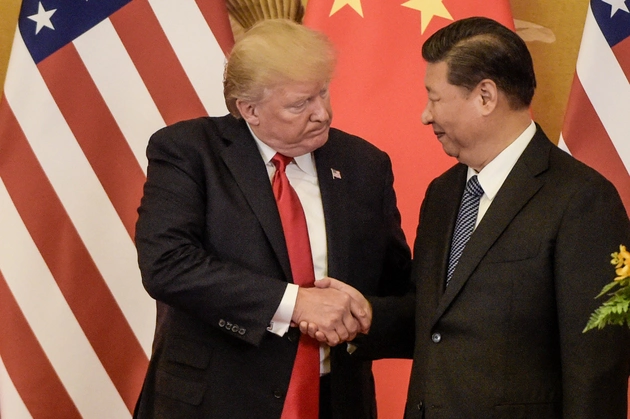
Finally, US, China End Trade War
The United States and China have reached a framework agreement for a potential trade deal expected to be finalised when both leaders, President Donald Trump and President Xi Jinping, meet later this week in South Korea.
US Treasury Secretary, Scott Bessent, disclosed this during an interview with CBS, the BBC’s US news partner, saying the agreement covers a “final deal” on TikTok’s US operations and a deferral of China’s tightened restrictions on rare earth mineral exports.
He added that he does not expect the 100 per cent tariff earlier threatened by President Trump on Chinese goods to take effect, while China will resume large-scale purchases of US soybeans.
“We have reached a substantial framework for the two leaders,” Bessent said. “The tariffs will be averted.”
The development comes as both nations seek to prevent a fresh escalation in the trade war between the world’s two largest economies.
Bessent met senior Chinese trade officials on the sidelines of the Association of Southeast Asian Nations (ASEAN) Summit in Malaysia, which President Trump also attended as part of his Asian tour.
In a statement, the Chinese government confirmed that both sides held “constructive discussions” and “reached a basic consensus on arrangements to address their respective concerns.”
“Both sides agreed to further finalise specific details,” Beijing stated.
Since returning to the White House, President Trump has reintroduced aggressive trade policies, arguing that imposing tariffs on imported goods would boost US manufacturing and job creation.
His tariff measures have led several countries, including the United Kingdom, to renegotiate trade terms with Washington.
China has been the main target of the US president’s tariff strategy. Earlier this month, Trump threatened to impose a 100 per cent tariff on Chinese goods starting in November, following Beijing’s decision to tighten export controls on rare earth minerals — essential materials used in electronics, electric vehicles, and renewable energy technologies.
China processes about 90 per cent of the world’s rare earths, making it a dominant player in the global supply chain. Its restrictions earlier this year sparked outrage from US manufacturers that depend on the materials.
Bessent said China had now agreed to delay those export restrictions for one year while the two countries review their trade terms.
One of the biggest casualties of the trade dispute has been US soybean farmers, as China — the world’s largest soybean importer — halted purchases during the height of the trade conflict.
Bessent, himself a soybean farmer, hinted that the new framework would ease the pain of American farmers.
“I think we have addressed the farmers’ concerns,” he said. “When the announcement of the deal with China is made public, our soybean farmers will feel really good about what’s going on for this season and the coming seasons.”
The US Treasury Secretary also revealed that both countries had reached a final understanding on TikTok’s US operations, with Trump and Xi expected to “consummate that transaction” during their meeting on Thursday.
The White House had earlier insisted that TikTok’s Chinese parent company, ByteDance, must divest its US arm over national security concerns. However, Trump has repeatedly extended the deadline to allow for negotiations.
Under the proposed arrangement, US companies will control TikTok’s algorithm, while Americans will hold six of seven board seats for its US entity.
Trump, who once called for TikTok’s outright ban, has since shifted position, using the app as part of his outreach strategy during his successful 2024 presidential campaign.
Meanwhile, Washington announced on Sunday that new trade deals with Malaysia and Cambodia had been finalised, while frameworks had also been agreed with Thailand and Vietnam as part of efforts to expand American trade ties in Asia.
The outcome of this week’s meeting between Trump and Xi is expected to shape the next phase of US–China relations and determine whether the long-running trade tensions between both countries will ease or reignite.
Business
U.S. Government Shutdown Enters Third Week as Partisan Divide Worsens

U.S. Government Shutdown Enters Third Week as Partisan Divide Worsens
The political standoff in the United States has deepened as the government shutdown entered its third week on Monday, with Republicans and Democrats still unable to reach a compromise on a new funding bill to reopen federal operations.
The prolonged closure has left hundreds of thousands of federal workers furloughed, major public institutions such as the Smithsonian museums and the National Zoo closed, and key services like air traffic control under increasing strain.
Despite mounting frustration from citizens and mounting economic concerns, both parties remain entrenched in their positions, showing no immediate signs of compromise.
At the heart of the stalemate is a fierce disagreement over health care spending.
Senate Democrats have refused to support a short-term funding bill unless Republicans agree to restore subsidies under the Affordable Care Act (ACA) and reverse President Donald Trump’s cuts to Medicaid.
Republicans, on the other hand, insist that the government must first reopen before any policy negotiations can take place, accusing Democrats of “holding the budget process hostage.”
The impasse underscores the deep mistrust that has defined relations between both parties — now nine months into Trump’s second term.
While recent opinion polls suggest that a majority of Americans blame Republicans for the crisis, neither side has yet to gain a clear political advantage from the standoff.
Standoffs escalated further on Friday after the Trump administration dismissed hundreds of government employees, a move widely condemned as politically motivated and unprecedented in modern U.S. governance.
The White House defended the layoffs as part of broader “efficiency measures,” but critics say it was an attempt to pressure Democrats and consolidate control over key agencies.
Several of the terminations were later reversed after widespread confusion within government departments, exposing what observers described as chaotic management inside the administration.
In a bid to control the public narrative, President Trump assured that military personnel would continue to receive pay, presenting himself as a leader defending national security in difficult times.
He accused Democrats of “holding the government hostage”, saying they were using civil servants as bargaining chips.
However, Democrats have countered that narrative, accusing Trump of politicising the civil service and inflicting avoidable hardship on working families.
“This president is trying to turn public service into a political tool,” Senator Mark Kelly said. “It’s an attack on civil servants and the very idea of an independent government.”
Within the Republican camp, signs of internal friction are beginning to show.
While House Speaker Mike Johnson and Vice President JD Vance have maintained that Democrats are to blame for prolonging the shutdown, some lawmakers — including Marjorie Taylor Greene and Kevin Kiley — have criticised their leadership’s refusal to reconvene Congress to negotiate an end to the crisis.
Party insiders warn that the shutdown could deepen divisions within the GOP ahead of next year’s midterm elections, especially if the public continues to associate the crisis with Republican inflexibility.
Across the United States, the economic toll is beginning to bite.
Local businesses dependent on federal contracts are reporting losses, tourism has slowed, and public frustration is mounting, particularly in Washington, D.C., where government operations remain partially paralysed.
Unions representing furloughed workers have staged demonstrations in several cities, demanding that both sides return to the negotiating table.
Economists estimate that the shutdown could cost the U.S. economy billions of dollars if it extends into a fourth week.
For now, the standoff shows no sign of easing. Both parties appear determined to hold their ground — each calculating that the other will bear the greater political cost of public anger.
Until one side finds more advantage in compromise than confrontation, the shutdown — and the hardship it inflicts — may continue indefinitely.
-

 Features1 week ago
Features1 week agoZION IN FOCUS: The Fire, The Faith, and The Future of a Spiritual Revolution
-

 Opinion1 week ago
Opinion1 week agoWhen Mercy Betrays Justice, by Boniface Ihiasota
-

 Politics1 week ago
Politics1 week agoTrump, Putin, Zelensky in Diplomatic Crossfire
-
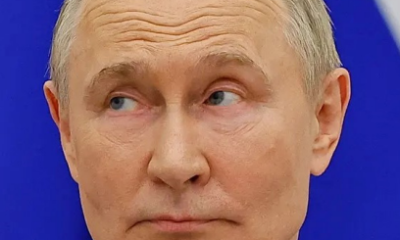
 Politics1 week ago
Politics1 week agoRussia Calls for Calm as Deadly Pakistan–Afghanistan Border Clashes Escalate
-
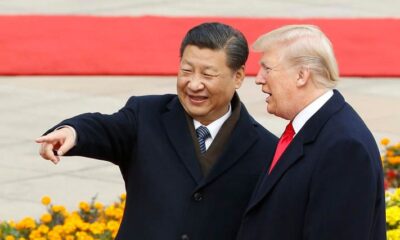
 Business1 week ago
Business1 week agoTrump-Xi Meeting to Hold Despite Rising Trade Wars
-

 News1 week ago
News1 week agoCARICOM Welcomes Gaza Peace Plan, Calls for Lasting Ceasefire






